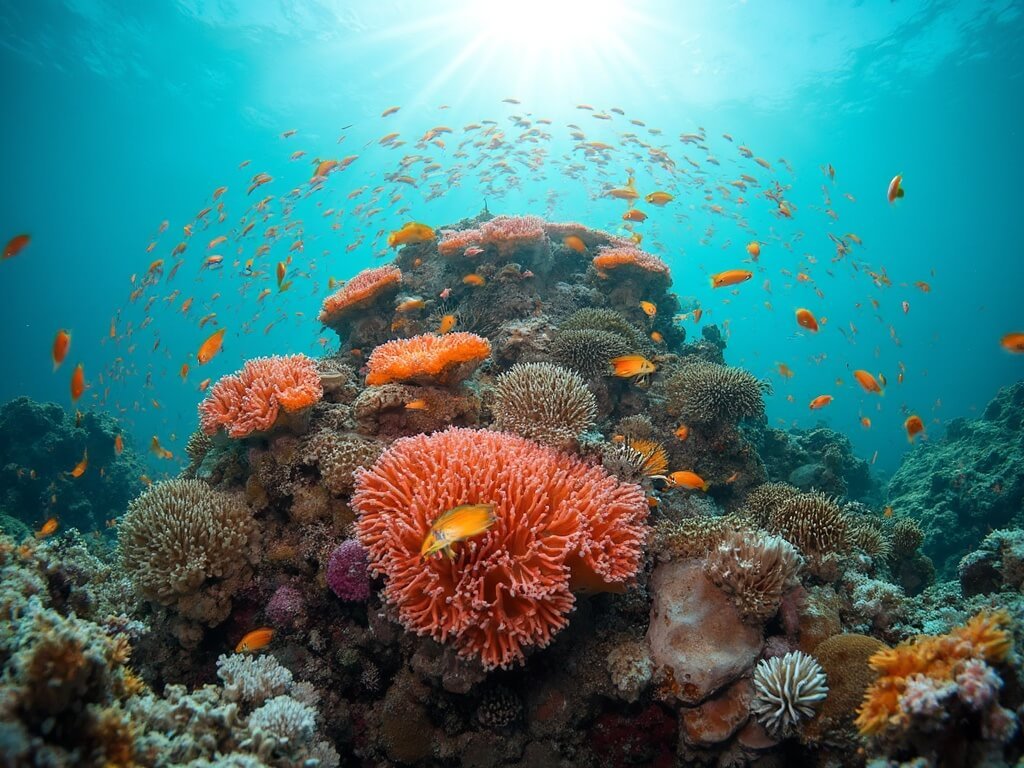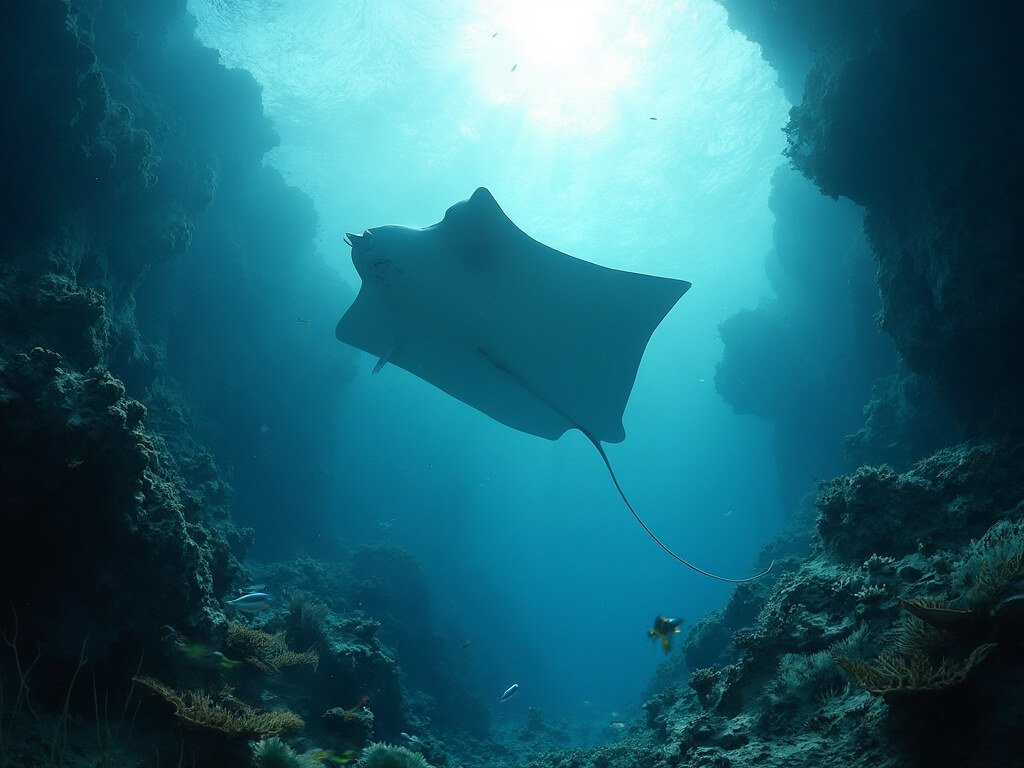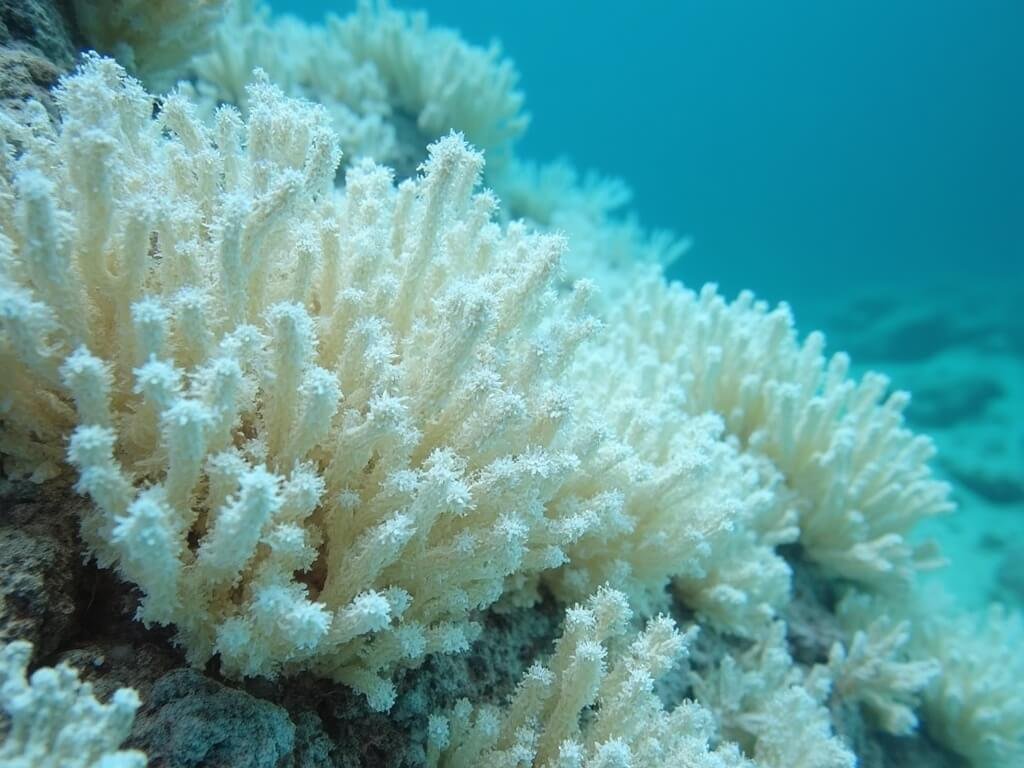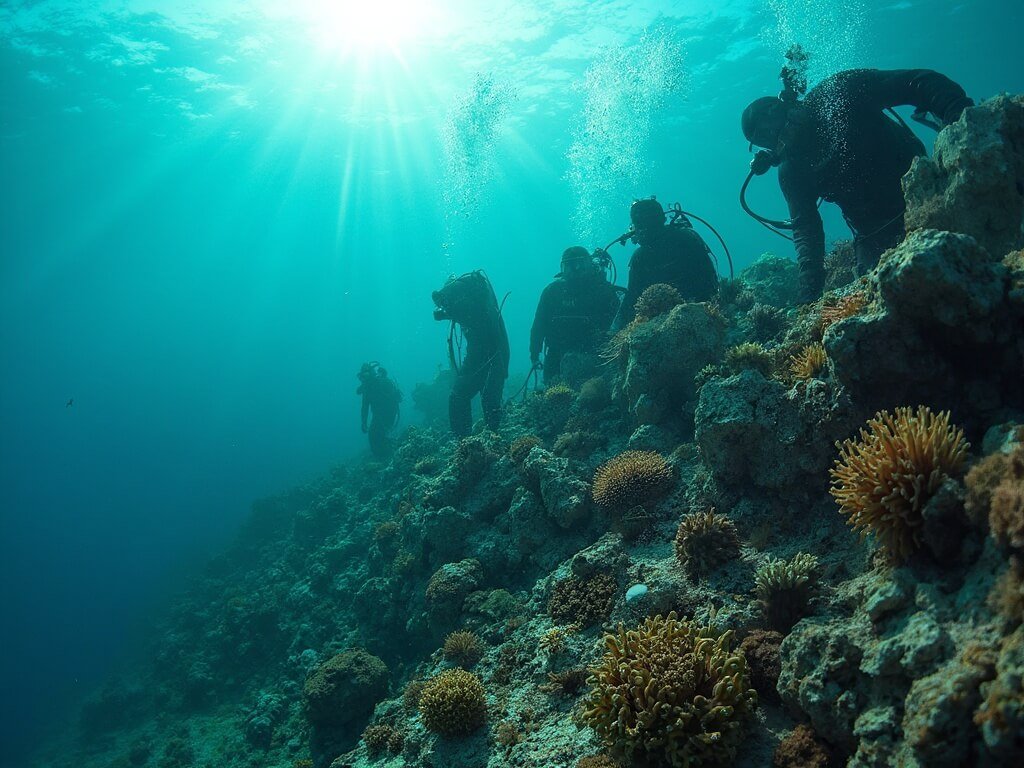Great Barrier Reef diving isn’t just another underwater adventure – it’s the holy grail of marine exploration.
Imagine a living, breathing ecosystem stretching 2,300 km along Queensland’s coastline, containing over 2,900 individual reefs and 600 islands. This isn’t just a reef. This is the world’s most spectacular underwater wilderness.
As a marine biologist and dive instructor with over 15 years exploring these waters, I’ve witnessed firsthand why the Great Barrier Reef is the ultimate scuba diving destination.

Why This Reef Will Blow Your Mind
UNESCO didn’t just randomly declare this a World Heritage Site. The Great Barrier Reef represents the most biodiverse marine environment on planet Earth.
Hard stats that’ll make your jaw drop:
- Over 1,500 fish species
- 400 different coral species
- Thousands of marine creatures calling this home
- Stretches wider than the entire United Kingdom’s landmass
My Personal Reef Encounter
I’ll never forget my first dive at Tracy’s Bommie in Flynn Reef.
Descending through crystal waters, a massive coral tower emerged – covered in technicolor marine life. Schools of angelfish darted between coral branches while a curious sea turtle glided past, barely an arm’s length away.
That moment crystallised why divers worldwide dream of experiencing the Great Barrier Reef.
Strategic Diving Regions: Where to Explore
Cairns and Northern Great Barrier Reef offer the most accessible and diverse diving experiences. Think of this area as the reef’s greatest hits album.
Top Dive Regions Include:
- Flynn Reef (wall dives, swim-throughs)
- Moore Reef (manta ray heaven)
- Agincourt Reef (shark central)
- Saxon Reef (turtle encounters)
Pro Tip: Each reef system offers something unique. Don’t just stick to one location.
Dive Site Superstars
Some dive sites are so legendary, they’re spoken about in hushed, reverent tones among divers:
- Tracy’s Bommie: Towering coral structure, fish everywhere
- Blue Wonder: Vertical wall dropping 40+ metres
- Whale Bommie: Humpback whale sighting hotspot
- Manta Ray Bay: Guaranteed manta ray encounters
Marine Life: Your Underwater Welcome Committee
Prepare to be surrounded by an underwater cast of characters:
- Reef sharks (white tip, black tip, grey reef)
- Sea turtles (green, loggerhead, hawksbill)
- Manta rays gliding like underwater fighter jets
- Kaleidoscopic reef fish
Seasonal Bonus: Humpback whales (June-September) and whale sharks (March-July) make guest appearances.
Dive Experience Options
Whether you’re a total beginner or a seasoned pro, the Great Barrier Reef has a perfect diving experience:
Day Trips from Cairns/Port Douglas:
- Morning and afternoon dives
- Two reef locations per trip
- Snorkeling included
- Options for all skill levels
Liveaboard Expeditions:
- 2-7 day trips
- Up to 16 dives in four days
- Access to remote, exclusive sites
- Night diving available
The reef was calling. And trust me, you’ll want to answer.
Dive Conditions: What to Expect
- Water Temperature: 22-30°C (balmy!)
- Visibility: 15-21 metres (often crystal clear)
- Depth Range: 5-30 metres
- Currents: Mild to moderate
My recommendation? The dry season (June-October) offers the best diving conditions with calm seas and remarkable visibility.
The landscape was about to get even more intriguing…
Explore More Aquatic Adventures
Looking to extend your marine exploration beyond Australia? Check out our guides on other unforgettable destinations:
Environmental Impact: The Reef’s Silent Struggle
Most divers don’t realize they’re swimming through one of the planet’s most fragile ecosystems.
Climate Change: The Invisible Enemy
- Rising ocean temperatures cause coral bleaching
- 50% of the reef has been lost in the last 25 years
- Coral recovery takes decades, if not centuries
Conservation: Not Just a Buzzword
During a research expedition in 2018, I witnessed firsthand how strategic conservation efforts could dramatically impact reef health.
Reef Restoration Strategies:
- Marine protected areas
- Coral regeneration projects
- Sustainable tourism practices
- Citizen science programs
Eco-Diving: Your Responsibility
Every dive is a potential contribution to reef preservation. Here’s how you can help:
- Choose certified eco-friendly operators
- Never touch marine life
- Use reef-safe sunscreen
- Participate in underwater cleanups
- Support marine conservation organizations
The Economics of Conservation
Did you know? Reef tourism generates approximately $6.4 billion annually for the Australian economy.
By practicing responsible diving, you’re not just protecting marine ecosystems – you’re supporting entire local communities.
Dive Insurance and Safety: Non-Negotiable Essentials
The ocean demands respect. Period.
Critical Safety Recommendations:
- Always dive within certification limits
- Maintain current medical clearance
- Invest in comprehensive dive insurance
- Follow operator safety briefings religiously
Pro Tip: DAN (Divers Alert Network) offers specialized marine adventure insurance.
Technology Meets Marine Exploration
The future of Great Barrier Reef diving isn’t just about swimming – it’s about understanding.
Emerging Technologies:
- Underwater drones
- Virtual reality reef experiences
- Advanced marine tracking systems
- Real-time ecological monitoring
Certification Pathways: From Beginner to Master
Your diving journey starts here:
Beginner Level:
- Discover Scuba Diving
- Open Water Certification
- Minimum age: 12 years
Advanced Certifications:
- Advanced Open Water
- Rescue Diver
- Dive Master
- Specialized marine ecology courses
Frequently Asked Questions (The Real Answers)
Q: Is diving the Great Barrier Reef safe?
A: Absolutely – with proper training and reputable operators.
Q: What’s the best time to dive?
A: June-October offers optimal conditions.
Q: How expensive is a Great Barrier Reef diving trip?
A: Ranges from $150-$500 per day, depending on experience and package.
Final Thoughts: Beyond Just a Dive
The Great Barrier Reef isn’t a destination. It’s a living, breathing testament to our planet’s extraordinary marine biodiversity.
Each dive is a privilege. Each moment underwater is a connection to something far greater than ourselves.
Your adventure awaits. The reef is calling.
Ready to unlock the underwater paradise of Great Barrier Reef diving?
Explore more ocean-inspired ideas:
- Coastal Bedroom Decor
- Beachy Bathroom Corner Shelves
- Blue Couch Living Room Ideas
- Tropical Balcony Oasis Setup
- Modern Tropical Powder Room with Brass Accents










